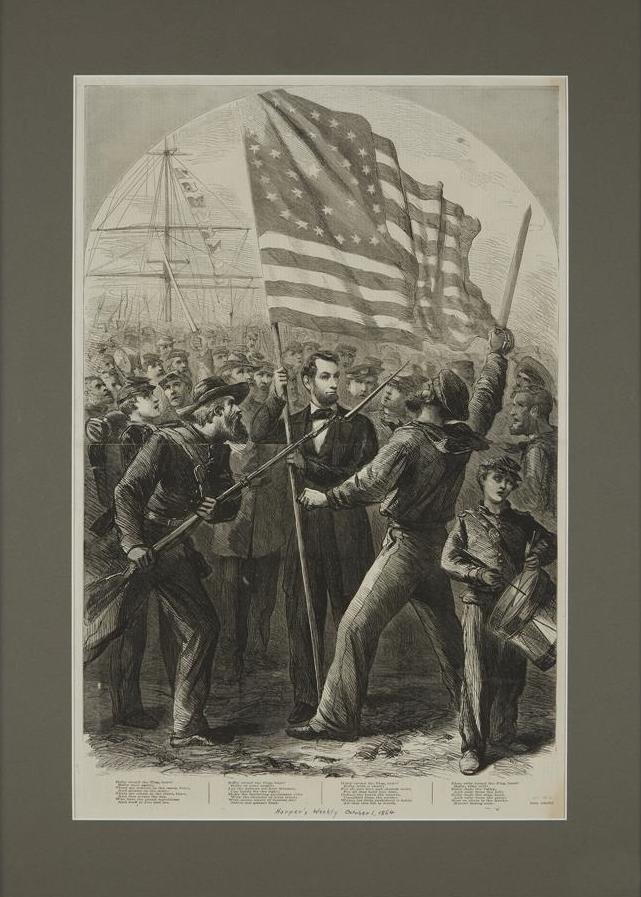19th Century Broadside Printings of the Emancipation Proclamation
One-sided and typically printed on large sheets of paper, engraved broadsides emerged during the 19th century. Advances in printing technology made their production inexpensive, making them all the more pervasive. Broadsides were encountered posted on buildings, hung in meetinghouses and pubs, and framed in homes as decorations. They aimed to spread news, shape public opinion, and rally people to action.
The Emancipation Proclamation enjoyed numerous broadside treatments, from simple printings of the text to those with complex illustrations. They presented illustrators with an opportunity to shape public opinion, so by studying surviving broadsides, we can glimpse the making of public opinion in the era of emancipation.
In this 1864 printing by W. Roberts, seen above, the intent of Lincoln's Proclamation is explained through vivid illustrations. The whip, auction block, and slave catchers, depicted at left, are replaced by scenes of public education and economic prosperity, illustrated at right. Lincoln sits above this process in which the destruction of war has given way to peace and good order. In this view, the Proclamation and the abolition of slavery are presented as key to ensuring the nation’s future well-being.

In this example engraved by Charles Shober in 1864, shown above, the intent of Lincoln's Proclamation is explained through decorative text to stress key words and patriotic vignettes. Words such as "Free," "Slaves," "Military Necessity," "War Measure," "Executive Order," and "Justice" are all embellished and enlarged. The vignettes of the American bald eagle and personifications of Columbia and prosperity are coupled with scenes of soldiers, fighting with a flag or saying goodbye to his family as he heads off to war. In this design, the Proclamation is presented as essential to ensuring both the end of the war and the continued upholding of the nation’s key foundational tenets of liberty and independence, all of which will lead to future prosperity.
In G.R. Russell’s broadside from 1865, shown above, the Proclamation is explained through its centered and large image of President Lincoln, standing firmly among the words of his Executive Order. His hand rests in a fist on top of the signed document, alluding to the strength and power of the executive branch to issue such decrees.
Click here to see all of the Emancipation Proclamation broadsides we have in our collection.







